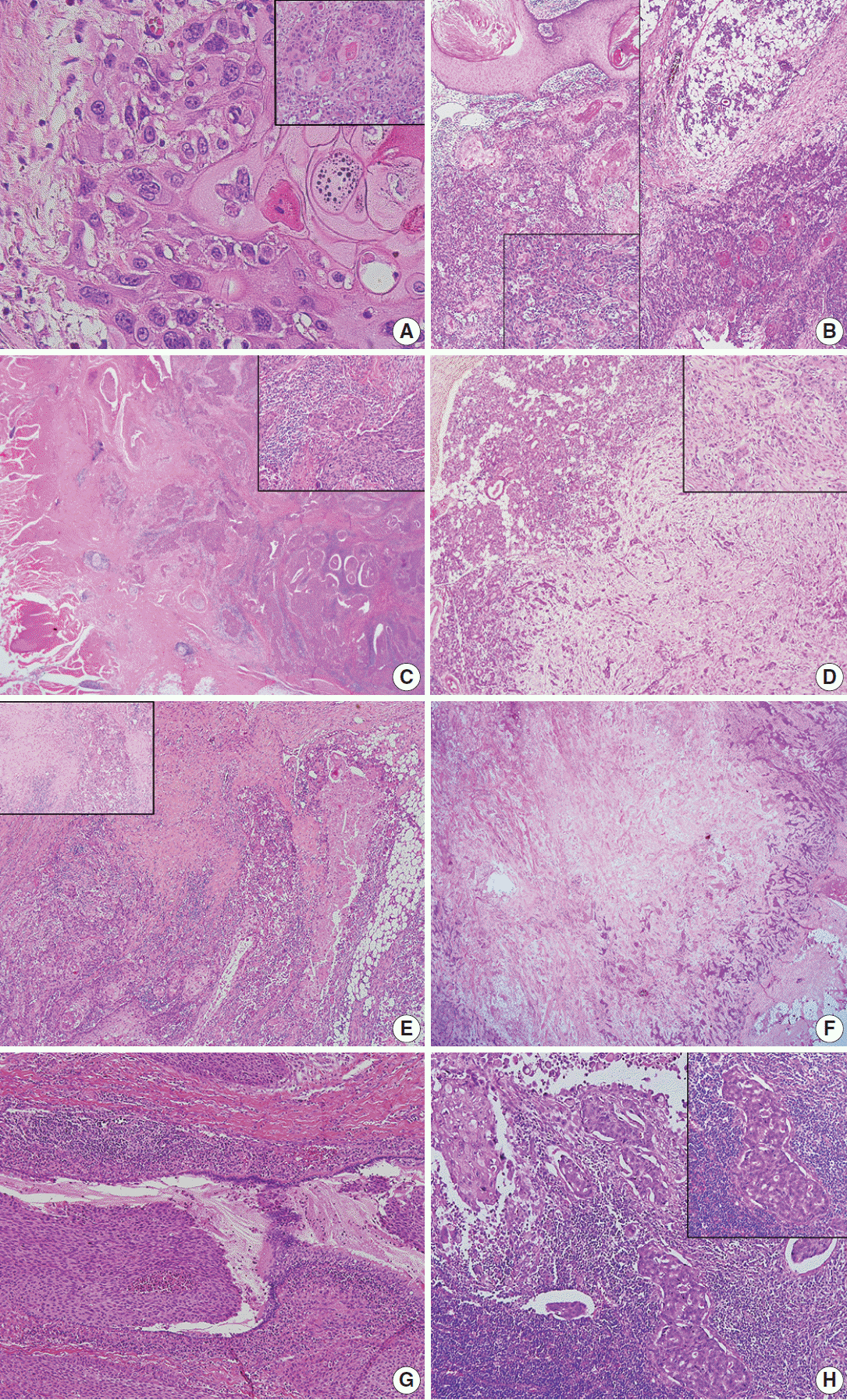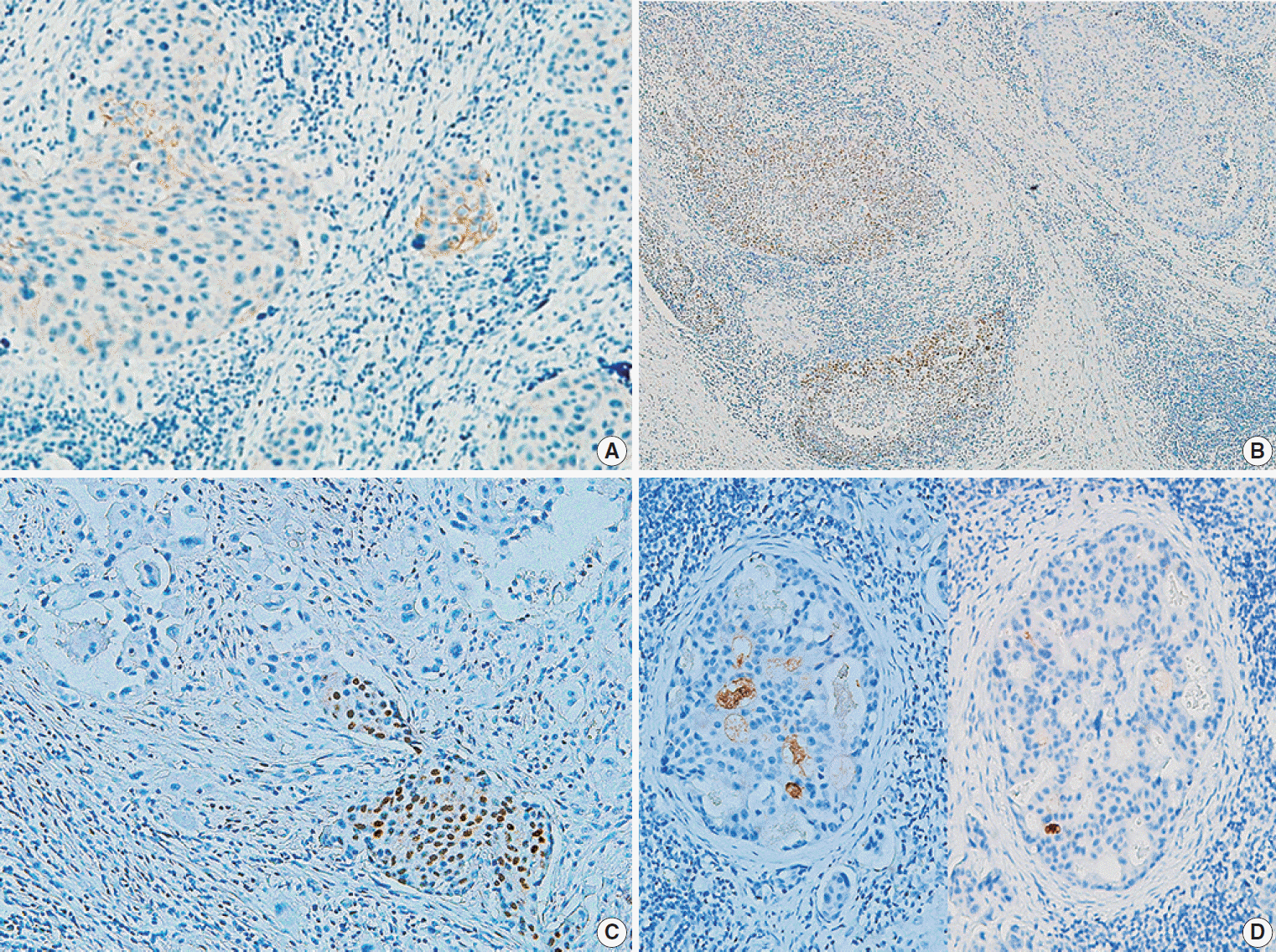1. Batsakis JG. Primary squamous cell carcinomas of major salivary glands. Ann Otol Rhinol Laryngol. 1983; 92(1 Pt 1):97–8.

2. Chen MM, Roman SA, Sosa JA, Judson BL. Prognostic factors for squamous cell cancer of the parotid gland: an analysis of 2104 patients. Head Neck. 2015; 37:1–7.

3. Flynn MB, Maguire S, Martinez S, Tesmer T. Primary squamous cell carcinoma of the parotid gland: the importance of correct histological diagnosis. Ann Surg Oncol. 1999; 6:768–70.

4. Manvikar V, Ramulu S, Ravishanker ST, Chakravarthy C. Squamous cell carcinoma of submandibular salivary gland: a rare case report. J Oral Maxillofac Pathol. 2014; 18:299–302.

5. Panchbhai AS. Primary squamous cell carcinoma of salivary gland: report of a rare case. J Cancer Res Ther. 2015; 11:664.

6. Taxy JB. Squamous carcinoma in a major salivary gland: a review of the diagnostic considerations. Arch Pathol Lab Med. 2001; 125:740–5.
7. Williams L, Thompson LD, Seethala RR, et al. Salivary duct carcinoma: the predominance of apocrine morphology, prevalence of histologic variants, and androgen receptor expression. Am J Surg Pathol. 2015; 39:705–13.
8. Alsahafi E, Begg K, Amelio I, et al. Clinical update on head and neck cancer: molecular biology and ongoing challenges. Cell Death Dis. 2019; 10:540.

9. Zhou G, Liu Z, Myers JN. TP53 mutations in head and neck squamous cell carcinoma and their impact on disease progression and treatment response. J Cell Biochem. 2016; 117:2682–92.
10. Wolff AC, Hammond ME, Allison KH, Harvey BE, McShane LM, Dowsett M. HER2 testing in breast cancer: American Society of Clinical Oncology/College of American Pathologists clinical practice guideline focused update summary. J Oncol Pract. 2018; 14:437–41.

11. Glisson B, Colevas AD, Haddad R, et al. HER2 expression in salivary gland carcinomas: dependence on histological subtype. Clin Cancer Res. 2004; 10:944–6.
12. Xu B, Wang L, Borsu L, et al. A proportion of primary squamous cell carcinomas of the parotid gland harbour high-risk human papillomavirus. Histopathology. 2016; 69:921–9.

13. Gallego L, Junquera L, Calvo N, Fuente E, Rosado P. Bilateral carcinoma in situ of Wharton's duct after chronic obstructive sialadenitis: inflammation as the cause of malignancy? Ann Otol Rhinol Laryngol. 2012; 121:296–300.

14. Franzen A, Lieder A, Guenzel T, Buchali A. The heterogenicity of parotid gland squamous cell carcinoma: a study of 49 patients. In Vivo. 2019; 33:2001–6.

15. Bron LP, Traynor SJ, McNeil EB, O'Brien CJ. Primary and metastatic cancer of the parotid: comparison of clinical behavior in 232 cases. Laryngoscope. 2003; 113:1070–5.

16. Kulkarni AA, Thakur SS. Primary squamous cell carcinoma of submandibular salivary gland with sialo-cutaneous fistula: a rare case report. J Clin Diagn Res. 2015; 9:PD03–5.

17. Kapadia SB, Barnes L. Expression of androgen receptor, gross cystic disease fluid protein, and CD44 in salivary duct carcinoma. Mod Pathol. 1998; 11:1033–8.
18. Can NT, Lingen MW, Mashek H, et al. Expression of hormone receptors and HER-2 in benign and malignant salivary gland tumors. Head Neck Pathol. 2018; 12:95–104.

19. Dalin MG, Watson PA, Ho AL, Morris LG. Androgen receptor signaling in salivary gland cancer. Cancers (Basel). 2017; 9:17.

20. Nasser SM, Faquin WC, Dayal Y. Expression of androgen, estrogen, and progesterone receptors in salivary gland tumors: frequent expression of androgen receptor in a subset of malignant salivary gland tumors. Am J Clin Pathol. 2003; 119:801–6.
21. Udager AM, Chiosea SI. Salivary duct carcinoma: an update on morphologic mimics and diagnostic use of androgen receptor immunohistochemistry. Head Neck Pathol. 2017; 11:288–94.

22. Agarwal M, Agarwal L, Saxena R. Primary squamous cell carcinoma of submandibular salivary gland: a case report. J Clin Diagn Res. 2017; 11:XD01–2.

23. Gaikwad RV, Kumaraswamy SV, Keerthi R. Primary squamous cell carcinoma of the submandibular salivary gland: a rare entity. J Maxillofac Oral Surg. 2015; 14(Suppl 1):57–9.







 PDF
PDF Citation
Citation Print
Print



 XML Download
XML Download